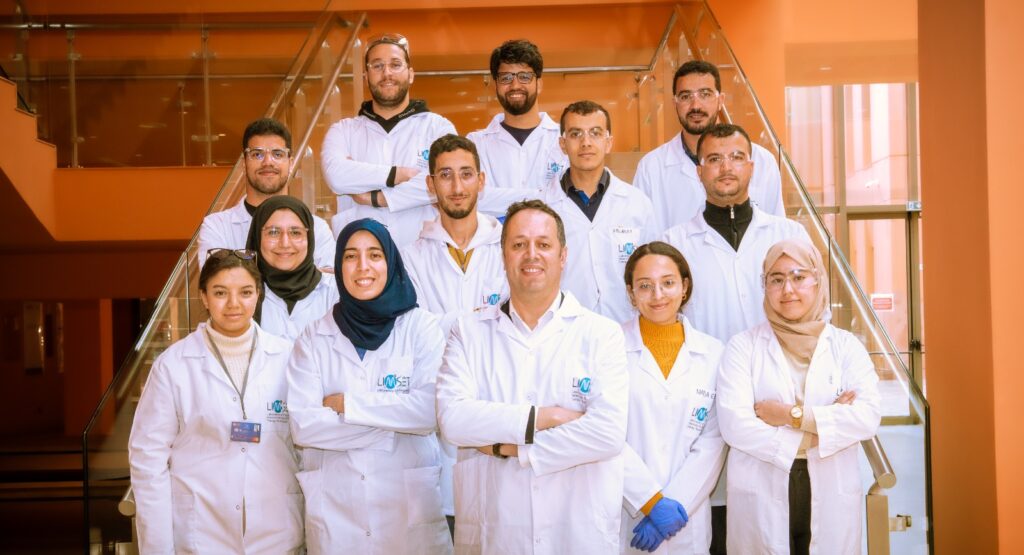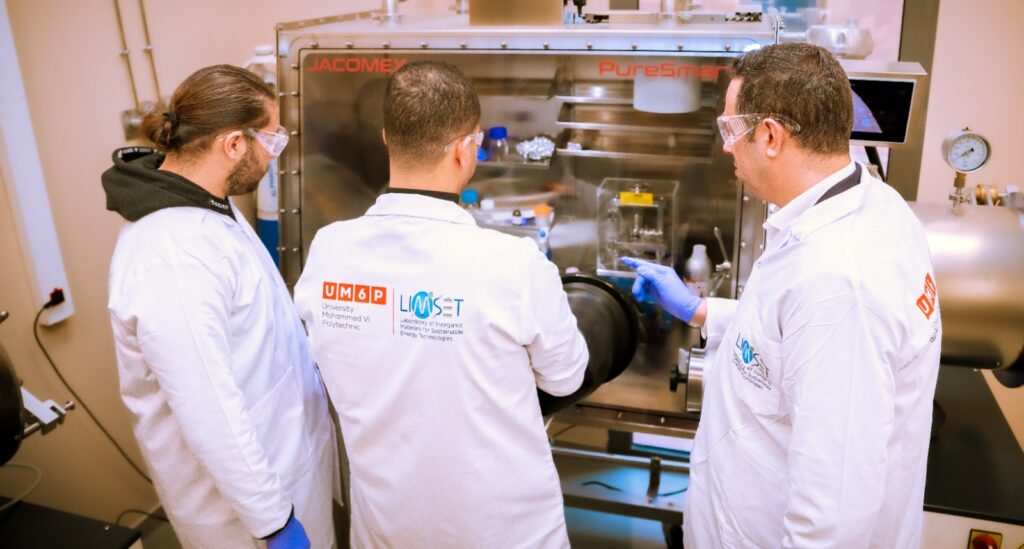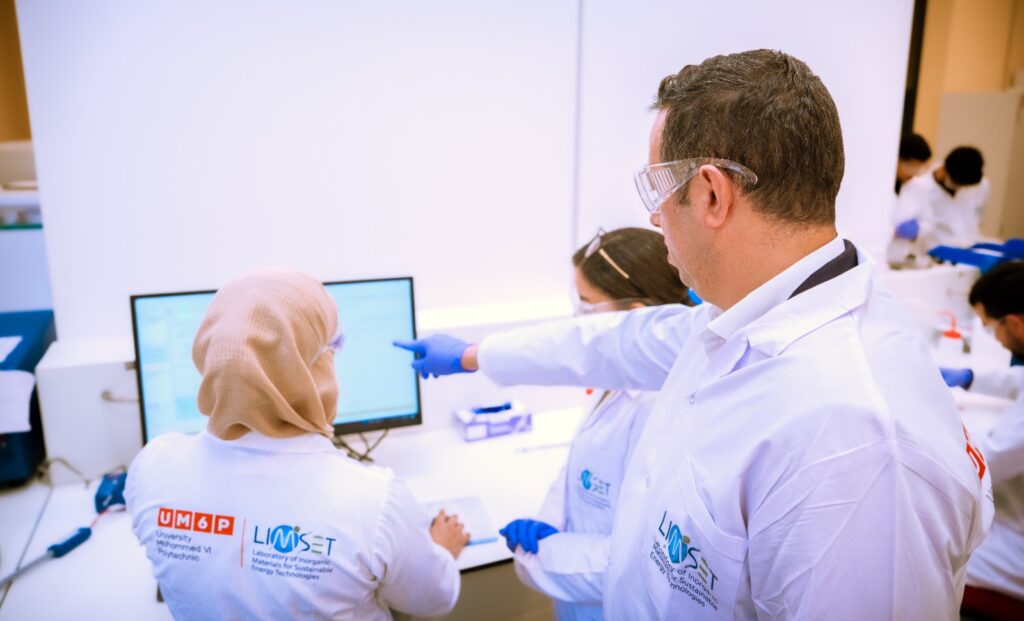A New Era for Africa’s Energy Landscape

Africa’s renewable energy capacity far exceeds its domestic electricity demand, making green hydrogen a viable pathway for energy sovereignty and economic development developments,” Professor Abdessamad Faik says.

Rabat – Africa finds itself today at a transformative crossroads in its energy journey, needing sustainable solutions to boost energy security and decarbonize hard-to-abate sectors, as energy demand is expected to double by 2050.
Green hydrogen, which is produced entirely from renewable energy sources, such as solar and wind, offers the continent an opportunity to leapfrog conventional fossil fuel dependency.
Green hydrogen is emerging as a “game changer” because it uses renewable electricity to split water into hydrogen and oxygen through electrolysis, explains Abdessamad Faik, researcher and professor at University Mohammed VI Polytechnic (UM6P), in an interview with Morocco World News.
Unlike conventional hydrogen production that relies on fossil fuels, which results in so-called gray or black hydrogen, green hydrogen minimizes carbon emissions and leverages renewable resources.
Economic and environmental synergies
Green hydrogen offers Africa a dual advantage, the professor argues. First, it can reduce industrial emissions in sectors that have historically been hard to decarbonize, such as heavy transport and chemical production. Second, it paves the way for greater energy independence by enhancing energy access, the professor says.
He gave the example of how using green hydrogen to stabilize grids that integrate intermittent renewable sources improves both energy reliability and storage capacity. This integrated approach, linking power generation, transport, and industry, could create localized energy ecosystems that drive economic development.
Further speaking about the economic implications of transitioning to green hydrogen, Faik says it could reduce the continent’s reliance on imported fossil fuels and help mitigate the volatility seen in global energy markets.
For example, Morocco’s experience with natural gas price fluctuations during geopolitical crises is an example of the risks associated with fossil fuel dependency. For instance, the Russia-Ukraine war, which began in early 2022, had a significant impact on global energy markets and led to severe disruptions in natural gas supplies. Gas and electricity prices spiked in Europe after the beginning of the war.

Notably, Spain was less affected by these increases due to its reliance on renewables. “Spain’s significant wind, solar, and hydro capacity reduced reliance on fossil fuels, limiting exposure to external price shocks,” according to IEECP experts Rogulj, Eichhammer, and Spyridakos.
Faik added that by investing in green hydrogen, African nations can create jobs, boost GDP growth, and foster a new industrial base centered around clean technology.
Morocco’s approach
Morocco is currently pursuing two main green hydrogen initiatives. The first is a government-led strategy that aims to produce green hydrogen and its derivatives primarily for export to European markets. This initiative is supported by an impressive slate of around 40 projects from 30 consortiums, though only a few have yet to break ground. The second initiative is driven by the Moroccan phosphate giant OCP, which is targeting the production of 1 million tonnes of green ammonia by 2027, with plans to scale up to 3 million tonnes by 2032. OCP’s strategy is twofold; to decarbonize its fertilizer production and to position Morocco as a major exporter of green ammonia. Already, OCP has arranged offtake agreements that promise to absorb a significant portion of the green ammonia output.
Already, OCP has arranged offtake agreements that promise to absorb a significant portion of the green ammonia output. Morocco’s approach extends to the critical infrastructure needed for such ambitious projects. The country is investing in port facilities; Jorf Sfer and Mohammedia already serve as key nodes for international trade, and upcoming terminals in Tafaya and Dakhla will further enhance export capabilities. In addition, Morocco is integrating renewable energy into its grid with large-scale projects like the solar plant in Ouarzazate, which produces over 580 megawatts of power. Complementing this, seawater desalination plants are ensuring that water scarcity does not hinder hydrogen production since water is the primary feedstock for electrolysis.
Morocco is not alone in its pursuit of green hydrogen. Several countries across the continent are launching projects that reflect Africa’s growing ambition in this sector. Mauritania, for instance, is moving ahead with the Announce Aman project to produce 1.7 million metric tons of green hydrogen annually. Egypt is planning to produce 260,000 metric tons of green ammonia each year for export to Germany, while Namibia and South Africa are both eyeing targets of around 300,000 metric tons of green hydrogen annually by 2030.
The challenge remains, however, in bridging the current “cost gap,” Faik says. “The big problem that we are suffering from is the cost gap between these green molecules and the normal ones, and we need to have an offtaker.”
Green hydrogen is presently two to three times more expensive than hydrogen produced from fossil fuels due to high electrolyzer costs and the price of renewable energy. Yet, as production scales up and technological advancements drive efficiency improvements, experts anticipate significant cost reductions, the professor reveals.
Currently, grey hydrogen remains the cheapest at €1 to €2 per kilogram, while blue hydrogen costs between €1.50 and €3 per kilogram. Green hydrogen is the most expensive, costing €3 to €7 per kilogram. However, costs are expected to decrease, particularly for green hydrogen, driven by improvements in electrolysis technology, scaling production, and lower renewable energy prices, Montel Energy reports.
Faik noted several trends that point to significant cost reductions in the future. For instance, scaling up production with gigawatt-scale factories can drive economies of scale, similar to what has been seen in solar and wind energy.
In addition, optimizing the energy mix by combining solar and wind would reduce localized electricity costs as well as ensure more consistent electrolyzer operation. The professor also expects advancements in electrolysis efficiency through AI-driven optimization and novel catalysts, alongside supportive measures like carbon pricing and government incentives, to drive down the costs over time.
Overcoming market and policy challenges
But for Faik, a major obstacle to the rapid deployment of green hydrogen is the “uncertainty” around market demand. The high production costs create a gap compared to conventional hydrogen, and a lack of clear offtakers for green hydrogen products complicates project financing.
In Africa, local demand for green hydrogen and its derivatives remains limited primarily due to cost factors, meaning that much of the impetus for large-scale projects depends on export markets, particularly in Europe.
Faik also spoke about the lack of clear definitions and standards within policy frameworks, especially ones that distinguish between “green,” “clean,” and fossil-based hydrogen. Such well-defined policies are necessary to build trust among investors and offtakers.
We have global market uncertainty, and if we have a good definition, green hydrogen means all the renewable energy used to produce these molecules should come from a green source, but also the electricity or the power plant that we are going to use should be connected with this infrastructure for producing green hydrogen,” he said.
He argued that establishing robust regulatory frameworks, along with incentives such as tax benefits and subsidies, can de-risk projects and attract private capital. In addition, investments in infrastructure, including pipelines, storage facilities, and export terminals, are essential.
Morocco’s collaboration with the natural gas pipeline from Nigeria to Europe, which could later be adapted for hydrogen transport, the professor said, is a prime example of how multi-country initiatives can lay the groundwork for a hydrogen economy.
The transition to green hydrogen is not a mere technological and infrastructural challenge but also a human capital challenge. Recognizing this, UM6P has developed specialized training programs in green hydrogen technology. In 2023, UM6P launched an Executive Master’s program in green hydrogen and its applications, an extensive course designed to build expertise across a range of critical areas. “The program was launched in 2023 to form the manager of this technology of today with the right skills that will help them to well deploy this kind of technology,” Faik said.
Building expertise
This innovative program, whose first and second cohorts celebrated its graduation last month, is structured into eight modules covering the entire hydrogen value chain. The curriculum begins by exploring traditional hydrogen production methods, like gray, black, or hydrogen produced from fossil fuels, to provide a baseline understanding of current industrial practices. It then shifts focus to green hydrogen production via electrolysis and compares the advantages and disadvantages of various emerging technologies and catalysts.

Other modules focus on the handling, transport, and storage of hydrogen and students also learn about converting green hydrogen into other valuable molecules such as ammonia, ethanol, and methanol. The program also covers fuel cell technologies and the application of hydrogen in mobility and power generation.
Safety, standardization, and regulation form are another key component of the training to ensure that future professionals are well-versed in best practices and risk management. The program also examines the economic and business models necessary for building successful green hydrogen factories.
The program combines both theoretical lectures with hands-on laboratory work and “learning by doing” experiences to cultivate a new generation of experts ready to drive Africa’s green energy transition, the professor explains.
The program has already seen considerable success, with two cohorts graduating and a third cohort launching with 30 participants, including students from across Africa. “That means there is a real need in Africa for this kind of training and formation,” Faik remarked.
Plans are underway to extend these training initiatives to UM6P Laayoune to ensure that this skills development reaches more students and professionals.
But besides skills development, Faik argues that for green hydrogen to achieve its full potential, international partnerships are essential. Collaborative projects involving the European Union, Asian markets, development banks, and research institutions are critical for funding and technology transfer.
“By aligning the national policies and international market demand, African countries can enhance investor confidence and position themselves as leaders in the global hydrogen economy, he stressed.
The professor also noted the importance of a coherent strategy that addresses local challenges, such as infrastructure deficits and limited domestic demand, while tapping into international markets can help ensure that the economic benefits of green hydrogen remain within Africa.
Prioritizing domestic applications, such as power generation, heavy transport, and industrial processes, before expanding into exports, can allow African countries to secure energy independence and foster sustainable economic development, he remarked.
“By leveraging its abundance, renewable resources, forcing international partnership and implementing supportive policies, Africa can unlock significant economic and environmental benefits,” the professor concluded.

Leave a Reply